Igor Kadota
Fair Dynamic Spectrum Access via Fully Decentralized Multi-Agent Reinforcement Learning
Mar 31, 2025
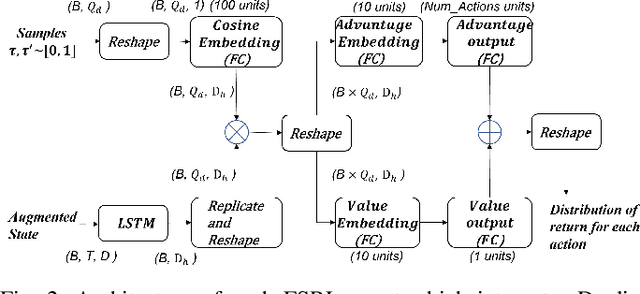
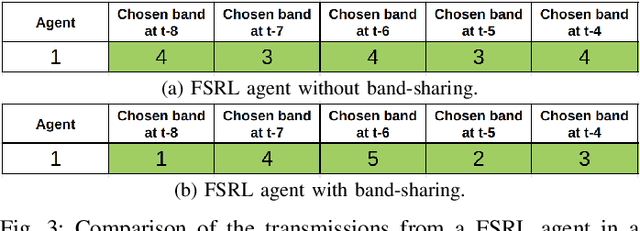

Abstract:We consider a decentralized wireless network with several source-destination pairs sharing a limited number of orthogonal frequency bands. Sources learn to adapt their transmissions (specifically, their band selection strategy) over time, in a decentralized manner, without sharing information with each other. Sources can only observe the outcome of their own transmissions (i.e., success or collision), having no prior knowledge of the network size or of the transmission strategy of other sources. The goal of each source is to maximize their own throughput while striving for network-wide fairness. We propose a novel fully decentralized Reinforcement Learning (RL)-based solution that achieves fairness without coordination. The proposed Fair Share RL (FSRL) solution combines: (i) state augmentation with a semi-adaptive time reference; (ii) an architecture that leverages risk control and time difference likelihood; and (iii) a fairness-driven reward structure. We evaluate FSRL in more than 50 network settings with different number of agents, different amounts of available spectrum, in the presence of jammers, and in an ad-hoc setting. Simulation results suggest that, when we compare FSRL with a common baseline RL algorithm from the literature, FSRL can be up to 89.0% fairer (as measured by Jain's fairness index) in stringent settings with several sources and a single frequency band, and 48.1% fairer on average.
Channel and Spectrum Consumption Models for Urban Outdoor-to-Outdoor 28 GHz Wireless
Mar 14, 2025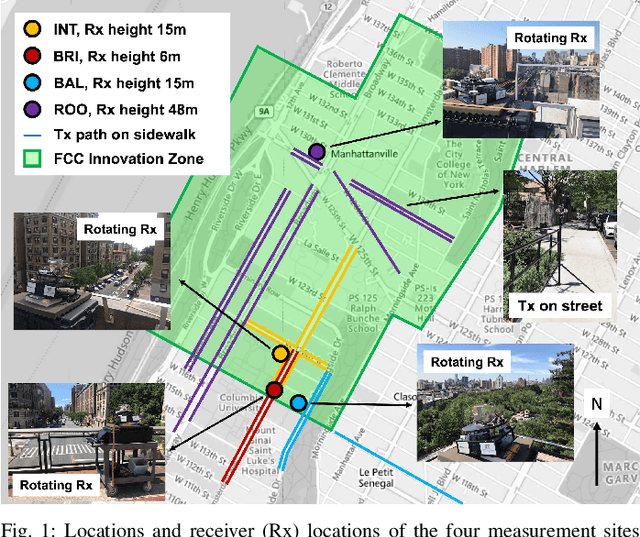
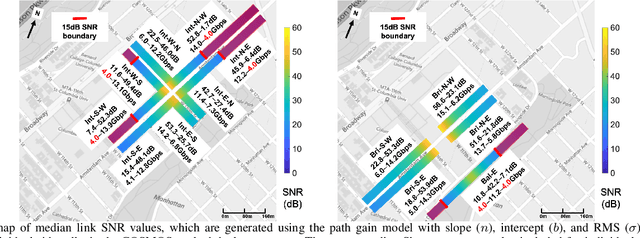
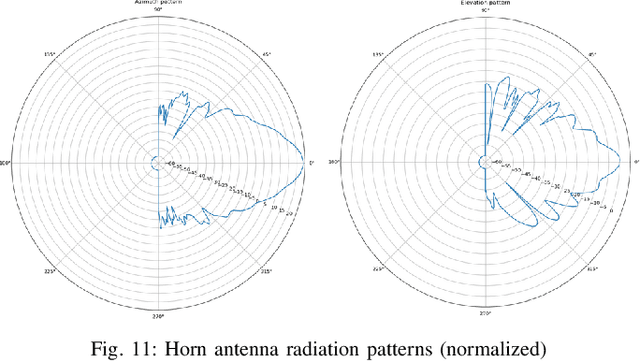
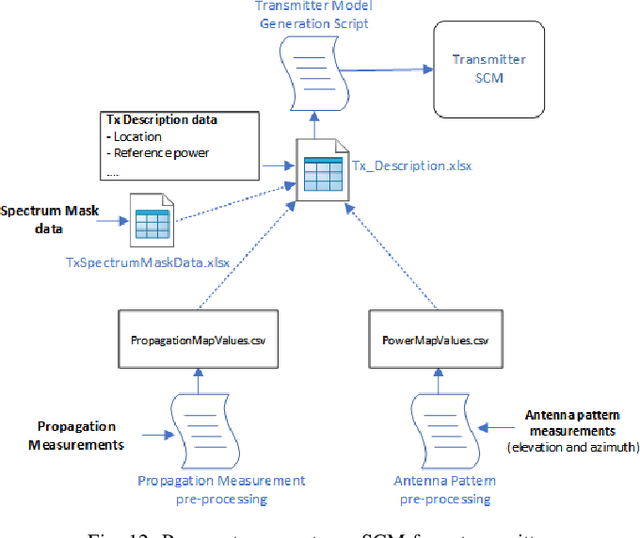
Abstract:Next generation wireless and mobile networks will utilize millimeter-wave (mmWave) communication to achieve significantly increased data rates. However, since mmWave radio signals experience high path loss, the operation of mmWave networks will require accurate channel models designed for specific deployment sites. In this paper, we focus on the deployment area of the PAWR COSMOS testbed in New York City and report extensive 28 GHz channel measurements. These include over 46 million power measurements collected from over 3,000 links on 24 sidewalks at 4 different sites and in different settings. Using these measurements, we study the effects of the setup and environments (e.g., transmitter height and seasonal effects). We then discuss the obtained path gain values and their fitted lines, and the resulting effective azimuth beamforming gain. Based on these results, we also study the link SNR values that can be supported on individual sidewalks and the corresponding theoretically achievable data rates. Finally, we develop a process to transform the measurements and generate Spectrum Consumption Models (SCMs) based on the IEEE 1900.5.2 standard. The generated SCMs facilitate the evaluation of spectrum sharing and interference management scenarios since they capture all the directional propagation effects reflected in the measurements and provide a way to easily share the main propagation characterization results derived from the measurements. We believe that the results can inform the COSMOS testbed deployment process and provide a benchmark for other deployment efforts in dense urban areas.
WiSwarm: Age-of-Information-based Wireless Networking for Collaborative Teams of UAVs
Dec 06, 2022



Abstract:The Age-of-Information (AoI) metric has been widely studied in the theoretical communication networks and queuing systems literature. However, experimental evaluation of its applicability to complex real-world time-sensitive systems is largely lacking. In this work, we develop, implement, and evaluate an AoI-based application layer middleware that enables the customization of WiFi networks to the needs of time-sensitive applications. By controlling the storage and flow of information in the underlying WiFi network, our middleware can: (i) prevent packet collisions; (ii) discard stale packets that are no longer useful; and (iii) dynamically prioritize the transmission of the most relevant information. To demonstrate the benefits of our middleware, we implement a mobility tracking application using a swarm of UAVs communicating with a central controller via WiFi. Our experimental results show that, when compared to WiFi-UDP/WiFi-TCP, the middleware can improve information freshness by a factor of 109x/48x and tracking accuracy by a factor of 4x/6x, respectively. Most importantly, our results also show that the performance gains of our approach increase as the system scales and/or the traffic load increases.
Outdoor-to-Indoor 28 GHz Wireless Measurements in Manhattan: Path Loss, Environmental Effects, and 90% Coverage
May 19, 2022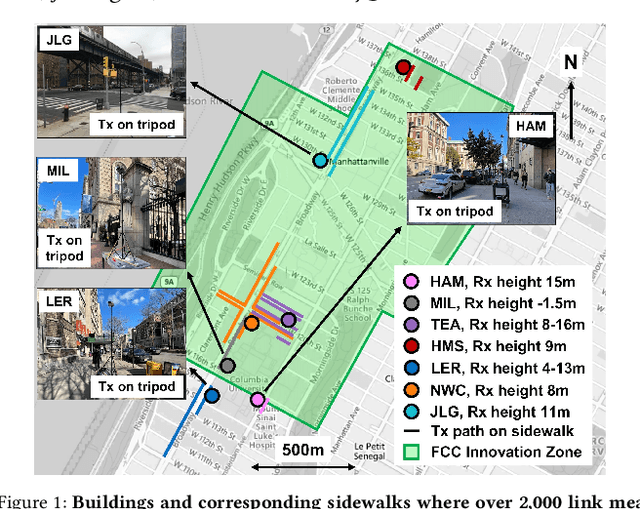

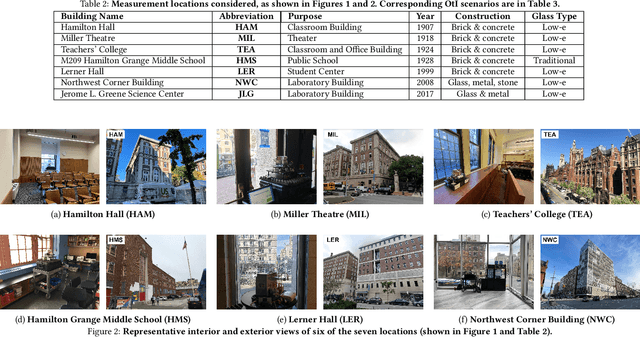
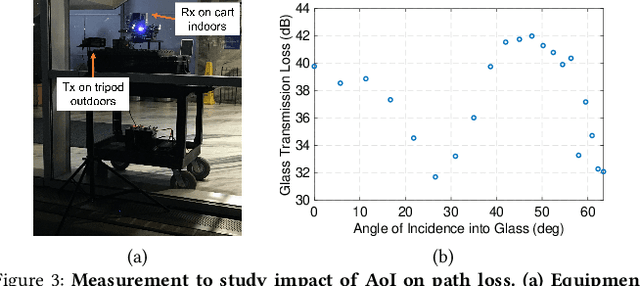
Abstract:Outdoor-to-indoor (OtI) signal propagation further challenges the already tight link budgets at millimeter-wave (mmWave). To gain insight into OtI mmWave scenarios at 28 GHz, we conducted an extensive measurement campaign consisting of over 2,200 link measurements. In total, 43 OtI scenarios were measured in West Harlem, New York City, covering seven highly diverse buildings. The measured OtI path gain can vary by up to 40 dB for a given link distance, and the empirical path gain model for all data shows an average of 30 dB excess loss over free space at distances beyond 50 m, with an RMS fitting error of 11.7 dB. The type of glass is found to be the single dominant feature for OtI loss, with 20 dB observed difference between empirical path gain models for scenarios with low-loss and high-loss glass. The presence of scaffolding, tree foliage, or elevated subway tracks, as well as difference in floor height are each found to have an impact between 5-10 dB. We show that for urban buildings with high-loss glass, OtI coverage can support 500 Mbps for 90% of indoor user equipment (UEs) with a base station (BS) antenna placed up to 49 m away. For buildings with low-loss glass, such as our case study covering multiple classrooms of a public school, data rates over 2.5/1.2 Gbps are possible from a BS 68/175 m away from the school building, when a line-of-sight path is available. We expect these results to be useful for the deployment of mmWave networks in dense urban environments as well as the development of relevant scheduling and beam management algorithms.
Switching in the Rain: Predictive Wireless x-haul Network Reconfiguration
Mar 07, 2022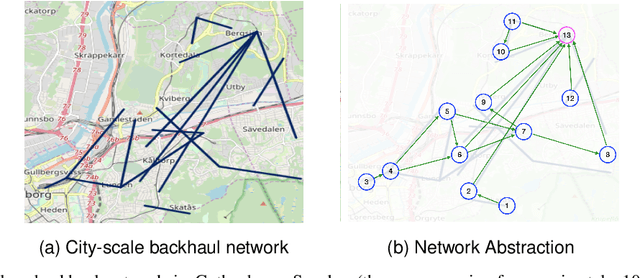
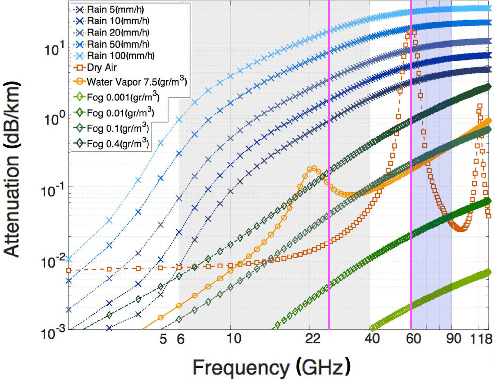
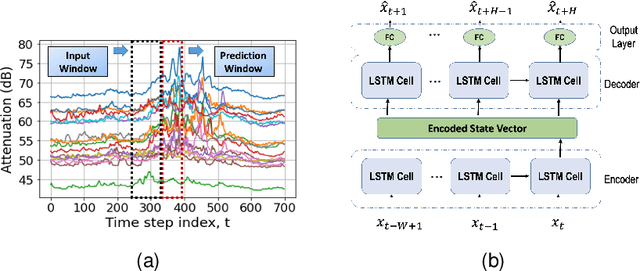
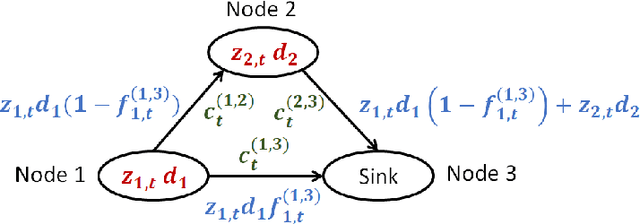
Abstract:Wireless x-haul networks rely on microwave and millimeter-wave links between 4G and/or 5G base-stations to support ultra-high data rate and ultra-low latency. A major challenge associated with these high frequency links is their susceptibility to weather conditions. In particular, precipitation may cause severe signal attenuation, which significantly degrades the network performance. In this paper, we develop a Predictive Network Reconfiguration (PNR) framework that uses historical data to predict the future condition of each link and then prepares the network ahead of time for imminent disturbances. The PNR framework has two components: (i) an Attenuation Prediction (AP) mechanism; and (ii) a Multi-Step Network Reconfiguration (MSNR) algorithm. The AP mechanism employs an encoder-decoder Long Short-Term Memory (LSTM) model to predict the sequence of future attenuation levels of each link. The MSNR algorithm leverages these predictions to dynamically optimize routing and admission control decisions aiming to maximize network utilization, while preserving max-min fairness among the base-stations sharing the network and preventing transient congestion that may be caused by re-routing. We train, validate, and evaluate the PNR framework using a dataset containing over 2 million measurements collected from a real-world city-scale backhaul network. The results show that the framework: (i) predicts attenuation with high accuracy, with an RMSE of less than 0.4 dB for a prediction horizon of 50 seconds; and (ii) can improve the instantaneous network utilization by more than 200% when compared to reactive network reconfiguration algorithms that cannot leverage information about future disturbances.
Aging Bandits: Regret Analysis and Order-Optimal Learning Algorithm for Wireless Networks with Stochastic Arrivals
Dec 21, 2020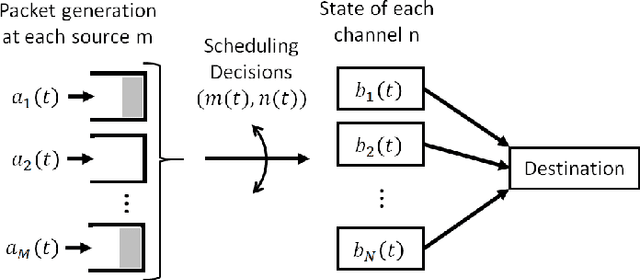
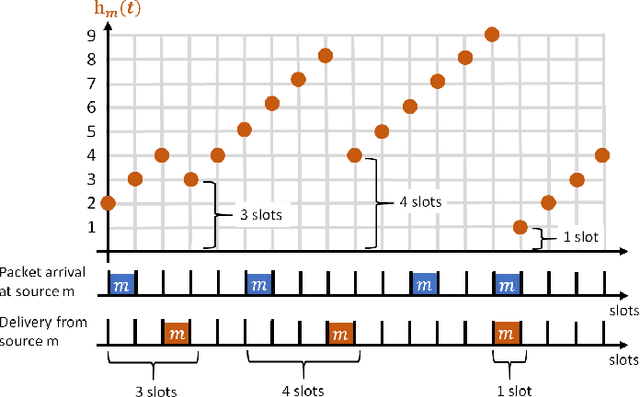
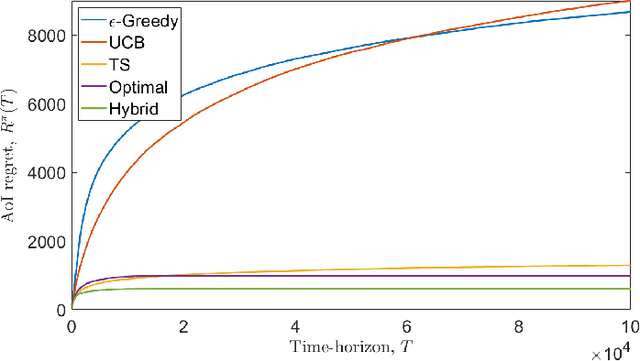
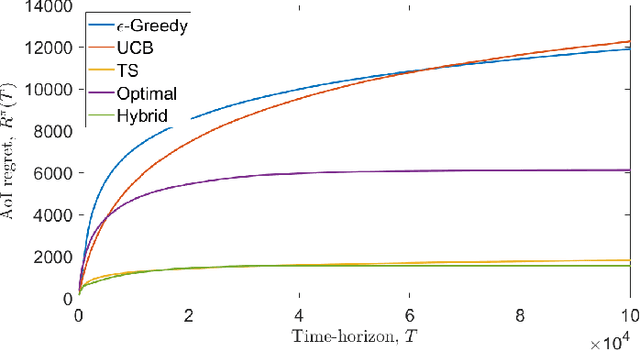
Abstract:We consider a single-hop wireless network with sources transmitting time-sensitive information to the destination over multiple unreliable channels. Packets from each source are generated according to a stochastic process with known statistics and the state of each wireless channel (ON/OFF) varies according to a stochastic process with unknown statistics. The reliability of the wireless channels is to be learned through observation. At every time slot, the learning algorithm selects a single pair (source, channel) and the selected source attempts to transmit its packet via the selected channel. The probability of a successful transmission to the destination depends on the reliability of the selected channel. The goal of the learning algorithm is to minimize the Age-of-Information (AoI) in the network over $T$ time slots. To analyze the performance of the learning algorithm, we introduce the notion of AoI regret, which is the difference between the expected cumulative AoI of the learning algorithm under consideration and the expected cumulative AoI of a genie algorithm that knows the reliability of the channels a priori. The AoI regret captures the penalty incurred by having to learn the statistics of the channels over the $T$ time slots. The results are two-fold: first, we consider learning algorithms that employ well-known solutions to the stochastic multi-armed bandit problem (such as $\epsilon$-Greedy, Upper Confidence Bound, and Thompson Sampling) and show that their AoI regret scales as $\Theta(\log T)$; second, we develop a novel learning algorithm and show that it has $O(1)$ regret. To the best of our knowledge, this is the first learning algorithm with bounded AoI regret.
Comparison of Classical and Nonlinear Models for Short-Term Electricity Price Prediction
May 02, 2018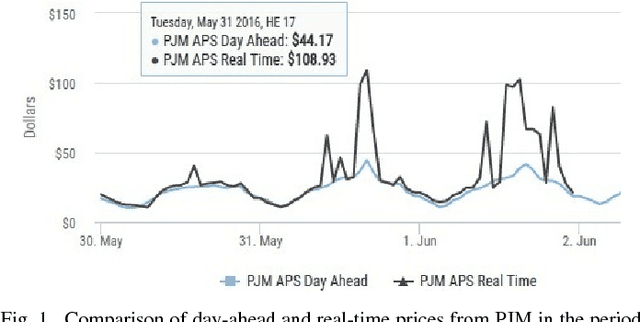

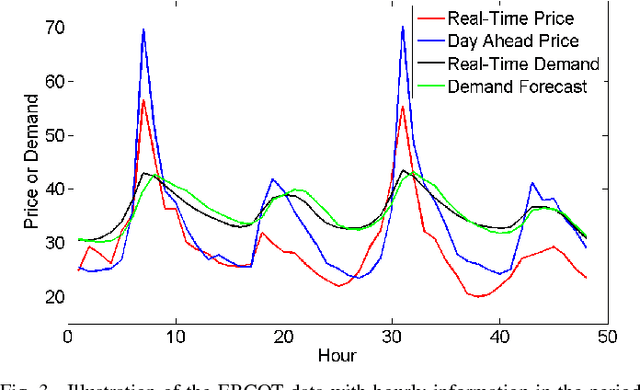
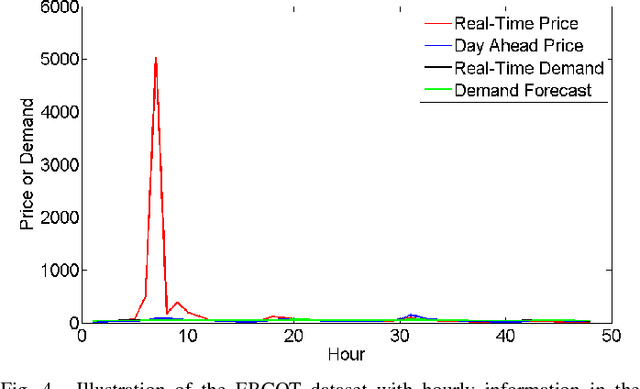
Abstract:Electricity is bought and sold in wholesale markets at prices that fluctuate significantly. Short-term forecasting of electricity prices is an important endeavor because it helps electric utilities control risk and because it influences competitive strategy for generators. As the "smart grid" grows, short-term price forecasts are becoming an important input to bidding and control algorithms for battery operators and demand response aggregators. While the statistics and machine learning literature offers many proposed methods for electricity price prediction, there is no consensus supporting a single best approach. We test two contrasting machine learning approaches for predicting electricity prices, regression decision trees and recurrent neural networks (RNNs), and compare them to a more traditional ARIMA implementation. We conduct the analysis on a challenging dataset of electricity prices from ERCOT, in Texas, where price fluctuation is especially high. We find that regression decision trees in particular achieves high performance compared to the other methods, suggesting that regression trees should be more carefully considered for electricity price forecasting.
 Add to Chrome
Add to Chrome Add to Firefox
Add to Firefox Add to Edge
Add to Edge